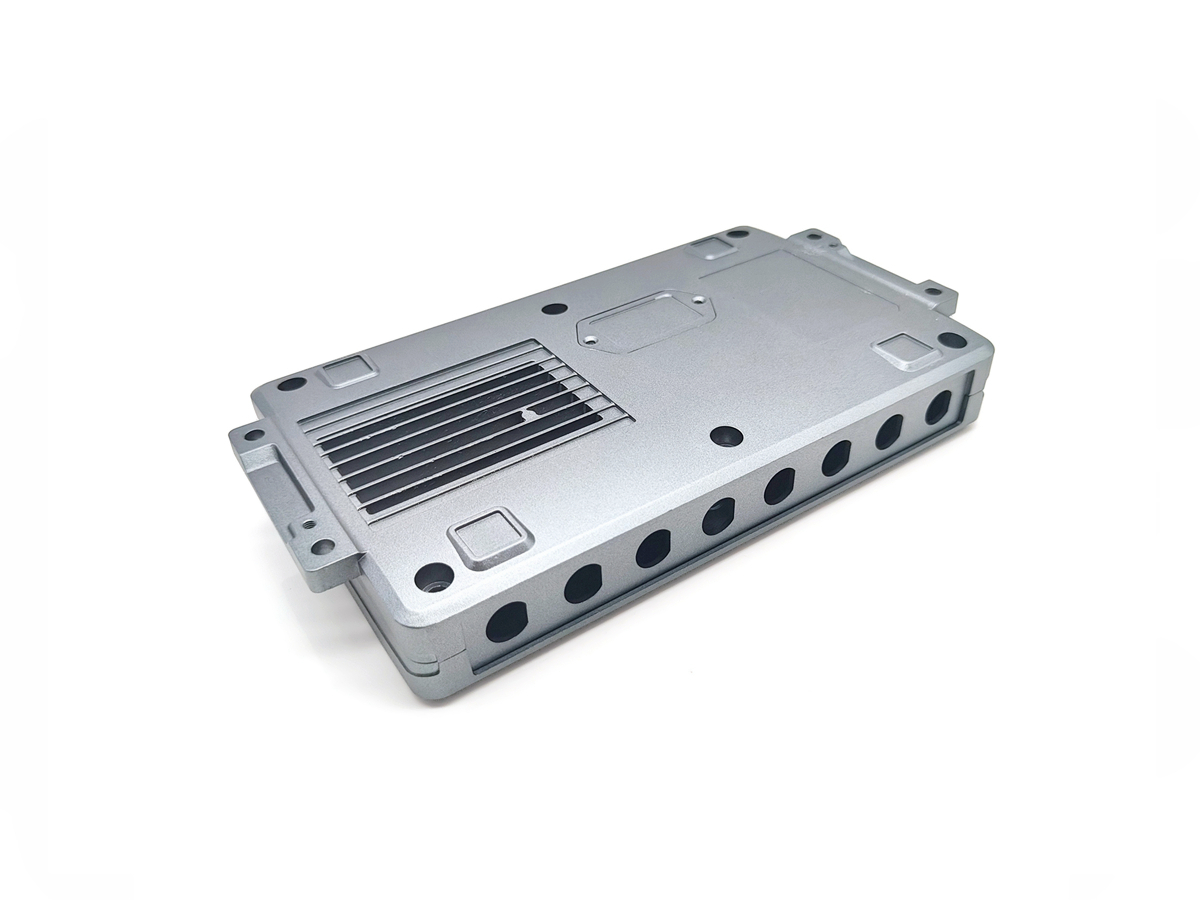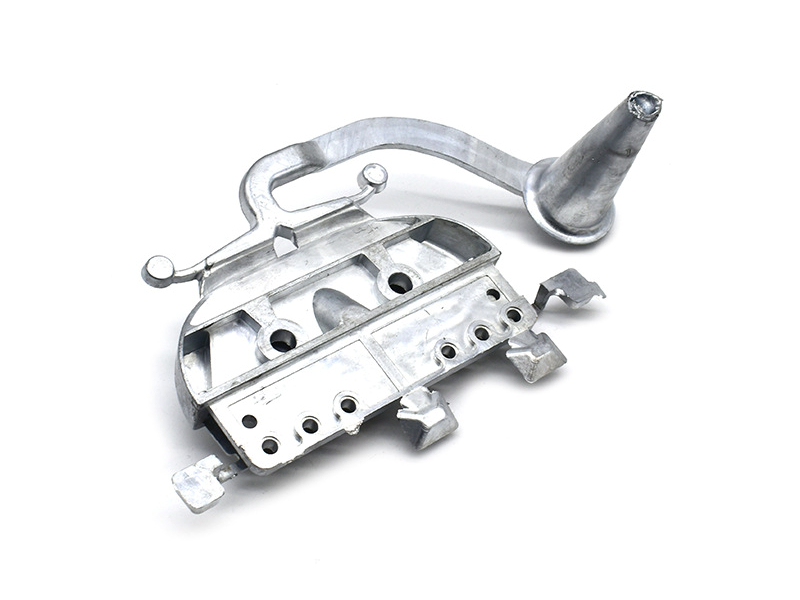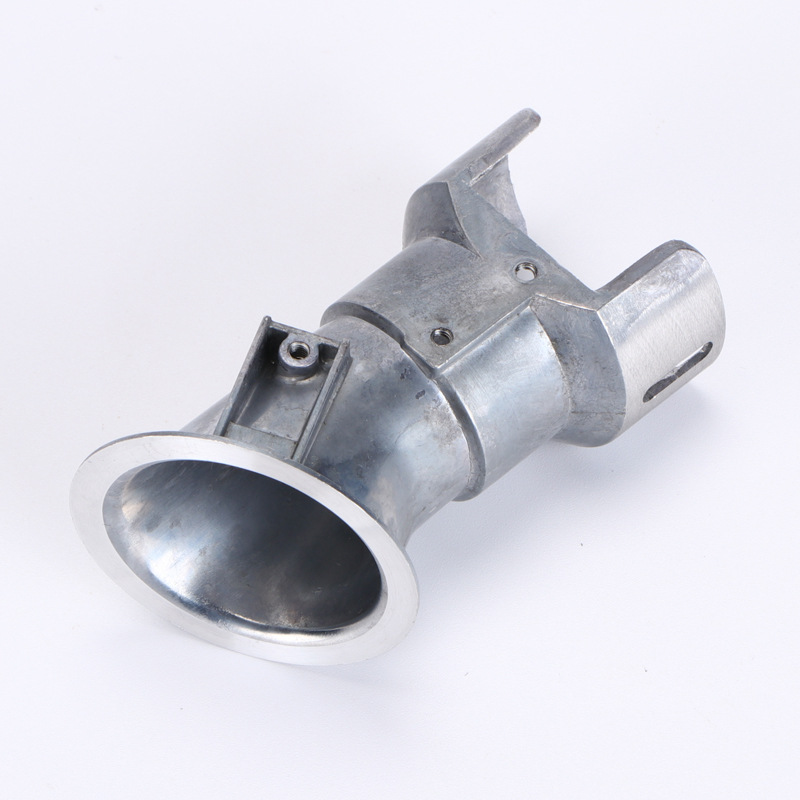Zinc-Aluminum
Zinc-Aluminum alloys, often called ZA alloys, are a family of high-performance materials known for their superior strength, excellent wear resistance, and good castability. These alloys are widely used in die casting applications that require durable, precision-engineered parts. Zinc-Aluminum alloys offer enhanced mechanical properties compared to traditional zinc alloys like Zamak 3 or Zamak 5, making them ideal for automotive, industrial, and aerospace components where performance under stress is critical.
At Neway, we specialize in providing Zinc-Aluminum die casting solutions, ensuring high-quality, durable, and precision parts with our advanced CNC machining, tooling, and surface finishing capabilities.
Description
Zinc-Aluminum alloys, including ZA8, ZA12, and ZA27, offer superior strength, wear resistance, and dimensional stability for high-performance die casting applications in automotive, aerospace, and industrial sectors.
Key Characteristics of Zinc-Aluminum Alloys
Zinc-Aluminum alloys are based on a combination of zinc and aluminum, with small additions of copper and other elements. These alloys are designed to provide superior mechanical properties, including high tensile strength, excellent wear resistance, and good thermal stability. Depending on the specific formulation (e.g., ZA8, ZA12, or ZA27), these alloys can offer varying levels of strength and fluidity, allowing for precision die casting in complex geometries.
Property | ZA8 Alloy | ZA12 Alloy | ZA27 Alloy |
|---|---|---|---|
Density | 6.7 g/cm³ | 6.9 g/cm³ | 7.0 g/cm³ |
Ultimate Tensile Strength | ~400 MPa (58,000 psi) | ~370 MPa (53,600 psi) | ~500 MPa (72,500 psi) |
Yield Strength | ~250 MPa (36,250 psi) | ~230 MPa (33,400 psi) | ~350 MPa (50,750 psi) |
Elongation at Break | ~1.5% | ~1.5% | ~1.0% |
Thermal Conductivity | ~130 W/m·K | ~120 W/m·K | ~115 W/m·K |
Coefficient of Thermal Expansion | ~22.5 µm/m·°C | ~22.0 µm/m·°C | ~21.5 µm/m·°C |
Brinell Hardness | ~90 HB | ~85 HB | ~95 HB |
As the aluminum content increases, these alloys tend to offer higher strength, greater wear resistance, and superior thermal stability, making them more suitable for high-stress applications.
Chemical Composition of Zinc-Aluminum Alloys
Element | ZA8 Alloy | ZA12 Alloy | ZA27 Alloy |
|---|---|---|---|
Zinc (Zn) | 85.0–91.0% | 85.0–92.0% | 85.0–92.0% |
Aluminum (Al) | 7.0–8.5% | 11.0–13.0% | 25.0–27.0% |
Copper (Cu) | ≤ 0.1% | ≤ 0.1% | ≤ 0.1% |
Magnesium (Mg) | ≤ 0.05% | ≤ 0.05% | ≤ 0.05% |
Higher aluminum content, especially in ZA27, contributes to improved mechanical properties and resistance to wear, making it suitable for parts that are exposed to high loads and temperatures.
Mechanical Properties of Zinc-Aluminum Alloys
Zinc-Aluminum alloys offer a broad range of mechanical properties that are ideal for casting durable and high-performance components. Below are the mechanical properties of common Zinc-Aluminum alloys like ZA8, ZA12, and ZA27.
Property | ZA8 Alloy | ZA12 Alloy | ZA27 Alloy |
|---|---|---|---|
Ultimate Tensile Strength | ~400 MPa (58,000 psi) | ~370 MPa (53,600 psi) | ~500 MPa (72,500 psi) |
Yield Strength (0.2% offset) | ~250 MPa (36,250 psi) | ~230 MPa (33,400 psi) | ~350 MPa (50,750 psi) |
Elongation at Break | ~1.5% | ~1.5% | ~1.0% |
Fatigue Strength (10⁸ cycles) | ~150 MPa (21,750 psi) | ~140 MPa (20,300 psi) | ~160 MPa (23,200 psi) |
Modulus of Elasticity | ~70 GPa | ~70 GPa | ~70 GPa |
Brinell Hardness | ~90 HB | ~85 HB | ~95 HB |
Zinc-Aluminum alloys, particularly ZA27, offer excellent tensile strength and fatigue resistance, making them ideal for high-performance parts exposed to mechanical and environmental stress.
Benefits of Using Zinc-Aluminum Alloys in Die Casting
High Strength: Zinc-Aluminum alloys, especially ZA27, provide high tensile strength and excellent durability, making them ideal for load-bearing and high-performance parts.
Wear Resistance: These alloys excel in applications requiring resistance to wear, abrasion, and impact, particularly ZA8 and ZA12.
Thermal Stability: Zinc-Aluminum alloys retain their strength and dimensional stability even at elevated temperatures, making them ideal for high-temperature environments.
Excellent Castability: Zinc-Aluminum alloys have excellent fluidity, which allows for intricate die casting and thin-walled parts with fine details.
Corrosion Resistance: The combination of zinc and aluminum offers good resistance to corrosion, making these alloys suitable for outdoor and marine applications.
Typical Applications of Zinc-Aluminum Die Cast Parts
Zinc-Aluminum alloys are widely used in industries requiring high-performance, durable components. These alloys are especially beneficial in applications exposed to high stress, temperature, and environmental conditions:
Automotive: Engine components, transmission parts, and structural brackets
Industrial Equipment: Pump components, valves, and mechanical parts for heavy-duty machinery
Aerospace: High-performance fittings and components for precision mechanical systems
Consumer Goods: Durable housings, electrical enclosures, and outdoor equipment
Marine: Corrosion-resistant components for marine engines and systems
The versatility and strength of Zinc-Aluminum alloys make them ideal for parts requiring both durability and precision.
CNC Machining Considerations for Zinc-Aluminum Alloys
Zinc-Aluminum alloys are relatively easy to machine and are well-suited for precision machining operations. The presence of aluminum enhances machinability compared to other zinc alloys.
Machining Recommendations:
Tooling: Carbide or TiAlN-coated carbide tools are recommended to reduce wear due to the alloy’s hardness.
Cutting Speed: Milling: 250–500 m/min; drilling: 100–150 m/min
Feed Rate: 0.05–0.15 mm/rev, depending on part complexity and tool size
Coolants: Water-based coolants are recommended to ensure optimal cooling and smooth finishes.
Surface Finish: Ra ≤ 1.6 µm achievable, ideal for parts requiring high-quality surface finishes.
Tolerance: ±0.03 mm achievable for critical features.
Neway’s CNC machining services ensure high-precision results, meeting tight tolerances and delivering excellent surface quality.
Surface Treatments for Zinc-Aluminum Alloys
To further enhance the performance and appearance of Zinc-Aluminum parts, various surface treatments can be applied:
Anodizing: Provides enhanced corrosion resistance and a variety of color finishes for decorative applications.
Powder Coating: Adds a layer of protection and custom color options, ideal for parts exposed to harsh environments.
Painting: Provides UV and chemical resistance for exterior parts.
Tumbling: Used to smooth surfaces and remove burrs before finishing or coating.
All surface treatments are rigorously tested to meet the required durability, adhesion, and corrosion resistance standards.
Why Choose Neway for Zinc-Aluminum Die Casting?
Neway offers end-to-end solutions for Zinc-Aluminum die casting, including design for manufacturability, high-volume production, and precision CNC machining. Our expertise in producing high-strength, durable components ensures that your Zinc-Aluminum parts are manufactured to the highest standards of quality and precision.
FAQs:
How do Zinc-Aluminum alloys compare to Zamak alloys in terms of strength and wear resistance?
What are the key benefits of using ZA8, ZA12, and ZA27 in die casting?
Can Zinc-Aluminum die cast parts be anodized for additional protection?
What industries benefit from using Zinc-Aluminum alloys for die casting?
What machining processes are most effective for Zinc-Aluminum die cast parts?



